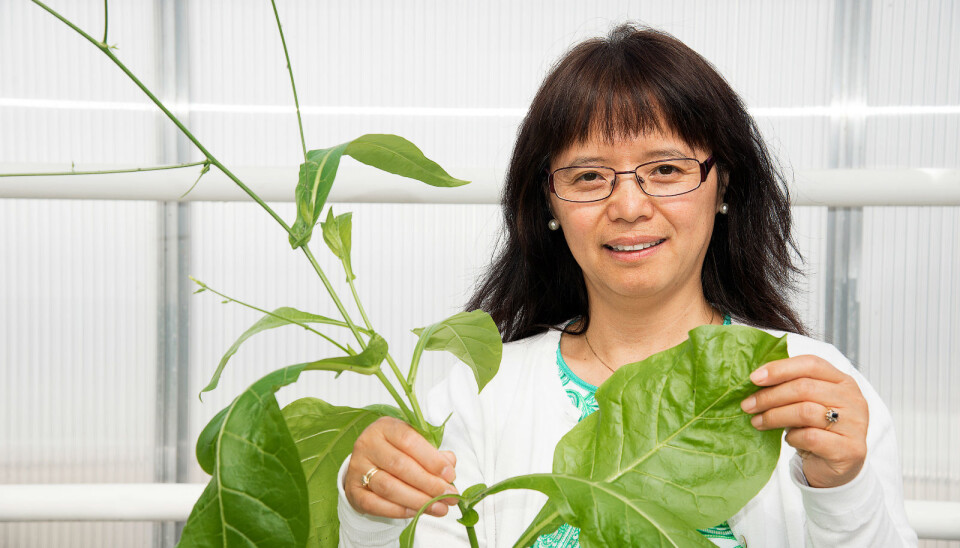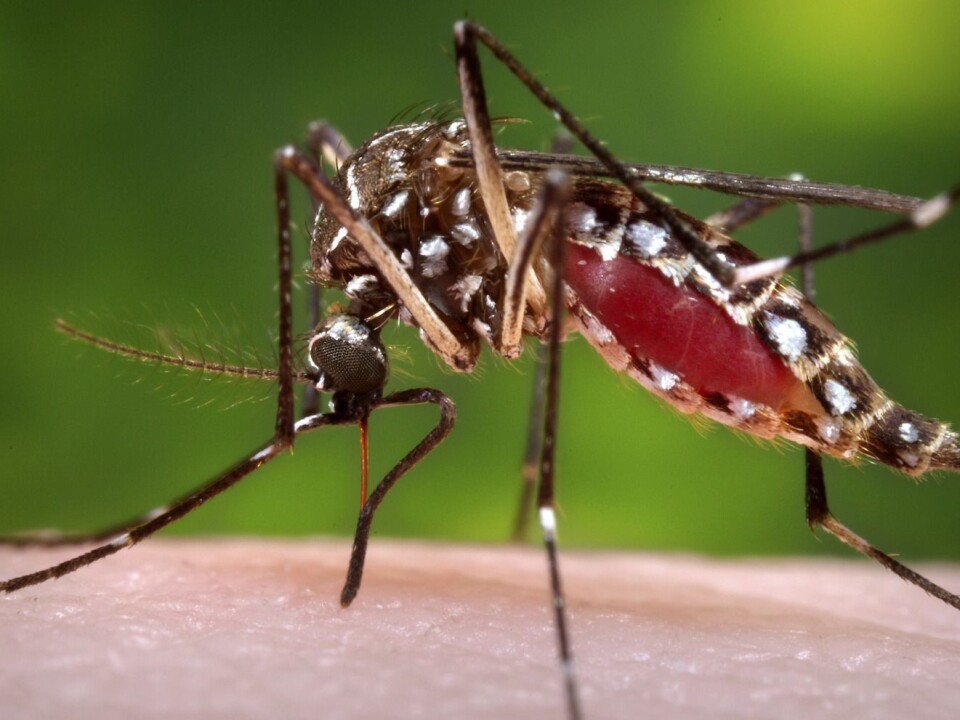This article was produced and financed by Norwegian Institute for Agricultural and Environmental Research

Plant based vaccines are medicine of the future
Norwegian researchers are trying to develop a life saving vaccine against dengue fever, which is currently hitting Asia hard with some of the worst outbreaks for decades.
Denne artikkelen er over ti år gammel og kan inneholde utdatert informasjon.
The vaccine will be based on the same technology as is used in the ZMapp Ebola medicine, utilising tobacco plants to develop antibodies.
Currently, Southern China suffers from the worst outbreak of dengue fever in two decades. More than 20,000 infections have been recorded, and a 1000 new cases of the potentially fatal mosquito-borne disease is emerging each day. Elsewhere in Asia, there have been reports of more cases and deaths in 2014 than in previous years. In India, a new report shows that the disease costs the country at least $548 million a year.
Four years ago at Bioforsk, the Norwegian Institute for Agricultural and Environmental Research, senior researcher Jihong Liu Clarke, began working on producing a vaccine against dengue fever. She has been inspired by Charles Arntzen, the man behind the ebola medicine ZMapp, and his work with edible vaccines and tobacco plants for developing antibodies
New approach
Conventional approaches to vaccine production are expensive, involving complex production and delivery methods, with high costs of fermentation and purification systems and additional expenses associated with adjuvant, cold storage, transportation and sterile delivery.

The demand for a new approach, with the potential for easy scale-up to produce large quantities, has become increasingly important.
Clarke and her team at Bioforsk have used chloroplast genetic engineering method to express both monovalent and tetravalent antigens in tobacco plants and lettuce. Transplastomic tobacco plants expressing the dengueantigens have been verified and the antigens are currently subjected to immunogenicity assays in collaboration with partners in Austria as well as simulated gastro-intestinal digestion analysis to evaluate whether lettuce-chloroplast derived dengue vaccine antigens are remained unaffected after subjecting to gastrointestinal digestion?
“We have come some way, but we are still far way from to go with dengue fever,” Clarke underlines.
Spin off projects
She was recently also awarded financing from the EEA financial mechanism and RCN (Nanotek 2021 program) for two spin off projects - one looking at a vaccine for Hepatitis where Bioforsk are working closely with Romania and one developing vaccines for salmon diseases using tobacco plants.
“Romania is the poorest country in Europe. Seven per cent of the population is infected with hepatitis, which is the highest rate in Europe,” Clarke says.
“The financial situation in Romania also means not everyone gets treatment - and the vaccine against Hepatitis B does not always work she points out: “10 per cent have no response and 5-10 per cent get strong side effects according to a report from the Romanian health authority.”
As for the second project, the researchers will be looking at vaccines against three salmon diseases in collaboration with partners at the Norwegian University of Life Sciences (NMBU, the project manager and owner) as well as consortium partners nationally and internationally.
Innovative
“We are thinking outside the box. Plants can be used for more than food and feed. We are adding value and pushing the boundaries,” Clarke says. She is very happy about the results with the Ebola medication as it shows the potential plant based drugs have: “It shows that plant production system works,” she says.
“This research is very exciting. We are thinking long term - this effort is contributing with information that others can utilise. We are creating something others can build on. The long term goal is to save human lives, but you don’t build a house over night. This is the foundation,” Clarke points out.
New use for tobacco plants
She says tobacco plants were chosen intentionally, as it adds value on a different level:
What will these farmers do if they don’t grow tobacco plants? Tobacco growers and industry need to identify a novel application for tobacco plants. The climate where tobacco is cultivated might not be that great for growing other plants.
“Furthermore, they have often been doing it for generations and it is what they know. It is difficult to change habits over night. With the proper conduction according to the biosafety regulations of genetically modified (GM) plants at national and international levels, tobacco plants can be grown and used for the health-benefit purpose in the future,” Clarke says.
Using tobacco plants for the production of vaccines and medicines is changing something which previously had a negative association to something positive.
“And it does not need the same financial investment when compared with fermenter-based production systems. It is also a goal for us to add value within the green and blue industries. It is a good example of how research can contribute on different levels - to save life and to utilise what we have in our society,” she emphasises.
Clarke is keen to underline that biotechnology is not just GM food, which many are skeptical about:
“This is just a small part, we can make so much more using biotechnology - such as life saving medicine, enzymes for degradation of forest-based biomass and food additives to mention a few.
“These developments last forever. That is the drive for me - and for Bioforsk - and is why we are open to new possibilities. Innovation is a key word. This is every scientist’s dream, to contribute to society and using the possibilities that are there. My goal being a senior scientist is putting efforts to bring the price down and make the vaccine accessible and affordable to poor people in developing countries,” she says.






























